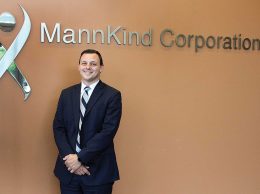
Alex Kacik
A housing shortage is driving the middle class out of California.
Several reports from Next 10 and Beacon Economics illustrated the state’s growing housing to jobs imbalance. Housing prices will continue to climb unless cities and counties increase residential densities and streamline the permitting process, according to the reports.
More people are leaving the state than coming in but the reports indicate that is more related to housing costs than the usual scapegoat — California’s tax structure.
From 2007 to 2014, about 53,000 more college graduates 25 and older moved to California than left. But there was a net outflow of 470,000 residents without college degrees, according to the studies released March 3. Predominantly lower-wage workers moved out of the Golden State.
Over the same time period, California attracted more than 38,000 people who lived in states that did not have income tax. This points to increasing housing prices dictating migration, not tax structures, the studies found.
The housing supply cannot keep up with population growth and in-migration, which are driving prices up. California is adding four people for every building permit granted, said Chris Thornberg, founder of Los Angeles-based Beacon Economics.
The California Environmental Quality Act and Proposition 13 deter development and thus limit the supply, Thornberg said.
“CEQA empowers every NIMBY to fight tooth and nail to resist any change,” he told the Business Times. “CEQA and Prop. 13 have more or less created huge barriers to let the private sector do what they do.”
Proposition 13 was touted as a tax break when it was enacted in 1978. It includes a 2 percent annual cap on property tax rates, limits the frequency and scope of property value reassessment and requires a two-thirds majority for tax hikes. While it allows low- or fixed-wage residents to stay in their homes, it limits local tax revenues that fund schools, public safety and other government functions and deters higher-density housing, Thornberg said.
Similar to the statewide data, the tri-county region is not building enough housing to adequately retain or recruit workers.
The strict regulatory environment and long permitting process coupled with a lack of construction financing during the recession have exacerbated the region’s housing shortage.
“California is a place people want to live,” Thornberg said. “Rich people live here, drive the prices up and push the middle-income people out.”
Westlake Village plaza sold
New York-based developer Atlas Capital recently purchased the Village Glen Plaza for $40.5 million.
Atlas bought the 70,000-square-foot property at 2900 Townsgate Road from Owensmouth LLC, which paid $24 million for the center in 2004.
The former owners put significant work into the property and there was about a 90 percent turnover of tenants that now include boutiques, salons, fitness uses and restaurants. Atlas plans to make upgrades of its own.
Village Glen Plaza is home to the largest organic farmers market in the region. It also includes Soto Lifestyle & Soto Boutique, Kate & Lace, Regency Salon Studios and restaurants Casa Escobar, Joi Café, Baskin Robins and Yozen Frogurt.
Santa Maria OKs Enos Ranch
The Santa Maria City Council recently approved the massive Enos Ranchos project, which plans to add up to 320 apartment units, retail development, a junior high school, a park and auto dealers at the corner of Betteravia Road and Highway 101.
San Luis Obispo-based developer Nick Tompkins of NKT Commercial purchased 115 acres of the 141-acre development and auto dealers acquired the rest.
The project includes a mix of big-box stores, including a Costco and Lowes Hardware, retailers, offices, car lots, a junior high school, a park and offices.
The goal, according to the Enos Ranchos Specific Plan, is to develop a variety of housing types and comply with state housing mandates as well as coordinate residential development and commercial amenities in one central location.
It is one of the last large blocks of undeveloped land in the city, officials said.
The project could start this summer and be completed in two to five years, depending on market conditions.
• Contact Alex Kacik at akacik@pacbiztimes.com.






 Print
Print Email
Email
















